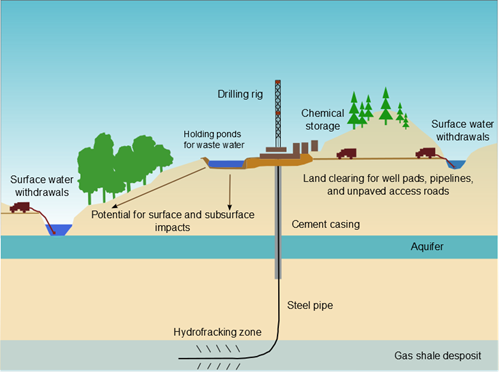Conservation Challenge
|
|
The Appalachian LCC geography covers the entire Marcellus Shale region in the Central Appalachians, including portions of New York, Pennsylvania, Ohio, Maryland, West Virginia, and Virginia. Because the LCC has identified energy development as a key driver of landscape change, the Cornell research area focused on the Marcellus Shale region and watersheds that extend beyond the Appalachian LCC borders.
Hydraulic fracturing is a process of drilling and injecting large quantities of water (often obtained from nearby streams) underground to break apart shale rocks and release natural gas. This energy process has rapidly expanded in Pennsylvania and West Virginia and could likely spread into Ohio and New York.
The Marcellus Shale region is characterized by geologic, topographic, and climatic variation that has created a variety of stream habitats and aquatic communities. This variety has led to considerable aquatic biodiversity. For example, field surveys summarized in this study suggest the region is home to more than 220 different fish species, including some threatened and locally endangered species. Furthermore, nearly 135,000 streams drain into three major economically and ecologically important watersheds: the Susquehanna, Ohio, and Delaware River basins.
The abundant biodiversity along with the many societal benefits provided by streams in the region (from energy to recreational) highlight the need for achieving sustainable river and stream flows that balance human/energy needs with healthy ecosystems.























